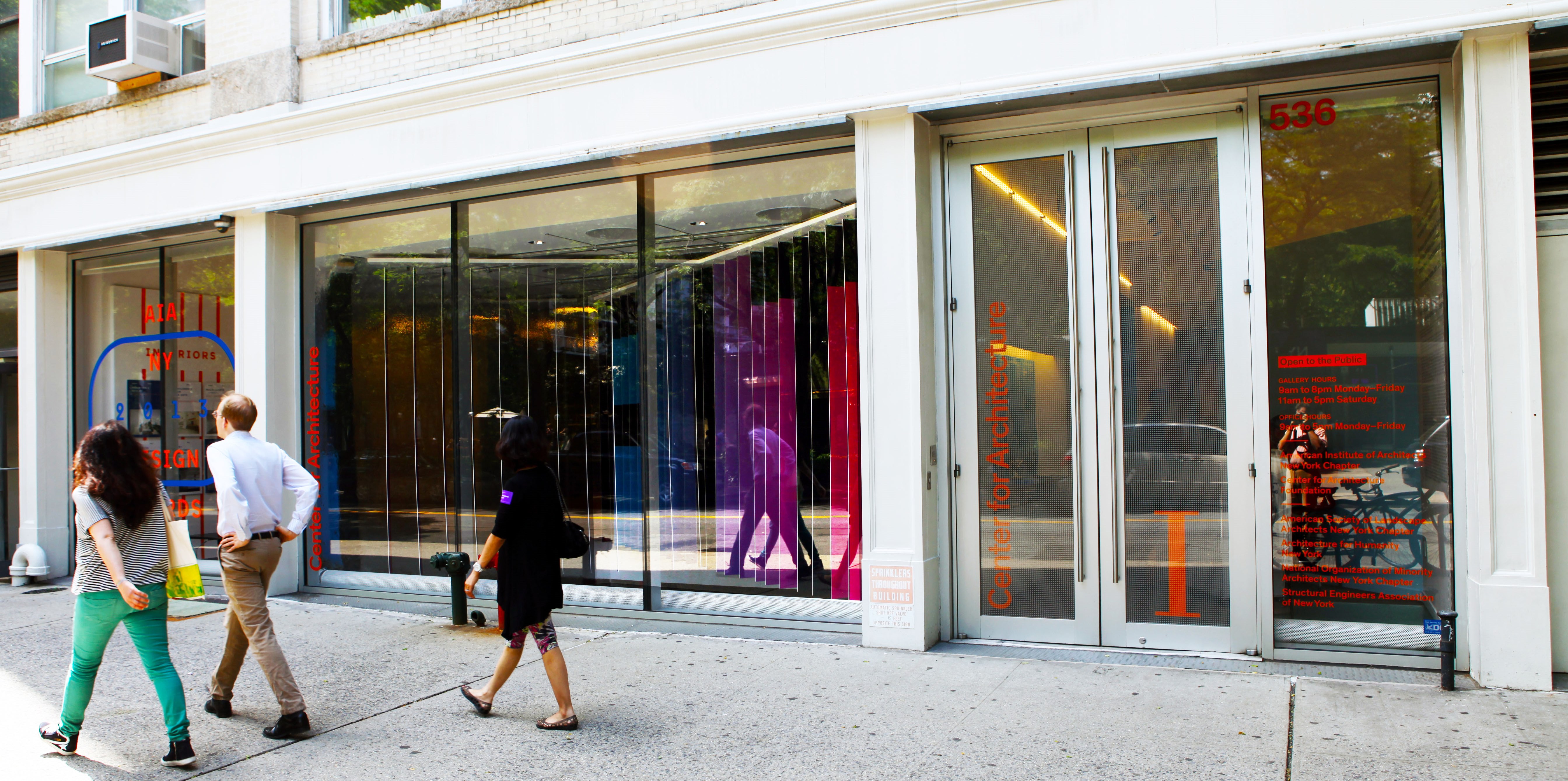by Bill Millard
The new “FitNation” exhibition at the Center for Architecture highlights 33 projects in 18 cities that exemplify the range of creativity that active design elicits. These new and adaptive structures, ranging from low-tech, open-source interventions to major public buildings and citywide networks, are organized here according to nine terms, mostly active verbs, expressing the things they make possible (climb, connect, grassroots, graze, move, network, play, re-purpose, ride).
Fit City, after seven increasingly influential conferences (the eighth was just held on 6.24.13), has gone national. The common-sense idea that buildings, public spaces, signage, and policy choices can contribute to physical mobility, helping to counteract the decades-long national epidemic of obesity and related “diseases of design,” has struck a responsive chord in city after city inside and outside the U.S. Though New York’s city agencies and AIANY have done as much as anyone to advance the concept through the Active Design Guidelines and the conferences, it’s not a “property” any city would want to monopolize, and it’s a testament to the efforts of local proponents that it’s no longer a local movement.
NYC Department of Design + Construction Commissioner David Burney, FAIA, speaking at the “FitNation” opening on behalf of the new Center for Active Design as well, described a recent meeting in London where he discovered that enthusiasm for the Fit City achievements, “an idea whose hour has come,” was already widespread among developers on the other side of the pond. “Certain skyscrapers in Asia,” reported 2013 AIANY President Jill Lerner, FAIA, now “have competitions for people to run up and down the stairs.”
New York projects are well-represented, but the emphasis is on outreach to 18 different cities, including communities that are notorious for sprawl-style development and all its associated pathologies. Atlanta now has the BeltLine, connecting 45 neighborhoods with a ring of abandoned railroads converted to multimodal transit, parks, and trails.
Los Angeles, the longtime national capital of car culture, is now devoting 15 miles of street space to recurrent Bogotá-style ciclavias (in this case branded “cicLAvia”), and repurposing metered parking spaces as temporary PARK(ing) Day-style mini-parks, returning active recreation to street space.
Birmingham, AL, has a “trainfront” skate park and assorted recreational facilities in 19 acres of space created by a rail viaduct bisecting the city center. University of Texas architecture students have launched an open-source Red Swing Project, in which anyone can transform an underused space (highway overpasses, vacant lots, remote villages) into a playground simply by anonymously hanging a scrapwood-and-climbing-rope swing; these have appeared not just in Austin, New Orleans, and Chicago, but across western Europe, Haiti, Thailand, Tibet, South Korea, and Australia.
The exhibition divides individual project-description boards with right-angled fins that protrude from the walls and present gradated colors and additional thematic text (“Be Fit”) at a side view. They also prevent an observer from taking in more than a panel or two of text at a time.
This is a purposeful feature of the exhibition, explained curator Emily Abruzzo, AIA, LEED AP. By removing the possibility of a casual sweep of the eyes across multiple projects from a single standpoint, the fins encourage the viewer to step up to each project area in turn, encouraging movement just like the depicted designs.
Projects are organized in vertical units of three 11”x17” modules, she added, making it easy to reproduce the exhibition in all the cities shown and beyond. “FitNation” will travel “not sequentially, where we pack it up in a box and ship it, but concurrently,” said Rick Bell, FAIA, 2013 AIANY Executive Director, “so that this can become debated in the here and now.” The template can also be extended with new projects at each city, making New York’s initial iteration of “FitNation” a module that can expand organically.
The distinctive feature of the Center’s exhibition, along with the main-floor projects, extensive Pentagram-designed hallway graphics, and mezzanine-level documentation and video areas, is a ping-pong table by the office-design firm Poppin, set up at first in Tafel Hall with the publicly-visible mezzanine area as its final destination. It can double as a conference table, and it is being raffled off at the end of the exhibition.
It’s a lighthearted reminder that the realms of play and work can easily combine, and should. After discovering what happens to human beings in spaces that for decades designed movement and vigor out of people’s lives, cities now have the delightful, purposeful opportunity to design those things back in.
Bill Millard is a freelance writer and editor whose work has appeared in Oculus, Icon, Content, The Architect’s Newspaper, and other publications.
Event: “FitNation” Exhibition Opening
Location: Center for Architecture, 06.13.2013
Speakers: Jill Lerner, FAIA, Principal, Kohn Pedersen Fox, and 2013 AIANY President; Rick Bell, FAIA, AIANY Executive Director; David J. Burney, FAIA, Commissioner, NYC Department of Design + Construction, and Chair of the Board, Center for Active Design; Emily Abruzzo, AIA, LEED AP, Partner, Abruzzo Bodziak Architects
Curator: Abruzzo Bodziak Architects
Exhibition Design: Abruzzo Bodizak Architects and Pentagram
Graphic Design: Pentagram
Organizers: AIANY in collaboration with the Center for Architecture Foundation
Sponsors: National Endowment for the Arts, AIA, Center for Active Design, Langan, MechoSystems, Sciame, and Skidmore, Owings & Merrill (Patrons); FXFOWLE, Lutron Electronics, Michael Fieldman, Architect, Syska Hennessy Group, and Zetlin & De Chiara (Sponsors); Blue Sea Development Company, Dattner Architects, and ECORE Commercial Flooring (Supporters); Archinect (Media Sponsor); Poppin (ping pong table provider)











